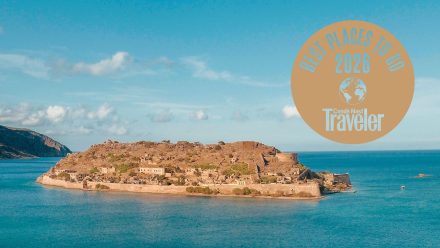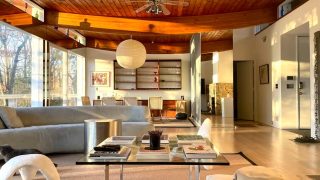My first time in Venice was just after pandemic travel restrictions lifted. Confined months at home made me want to see everywhere I’d put off, and as an Italian and travel writer who had never visited one of the world’s most famous cities, Venice was first on the list. On that visit the city felt surreal—canals and cobbled streets emptied of tourists—beautiful and oddly cinematic. By my second visit, arriving at Santa Lucia, I knew I’d return to the full Venice experience: crowds, gondolas, and overpriced drinks.
I don’t mind mixing with tourists, but I wanted to be as immersed as possible. That meant skipping hotels and finding authentic accommodation. When I discovered Palazzo Cristo San Marco on Airbnb—a 15th-century palace minutes from Piazza San Marco that had undergone a complete, design-led renovation—I was stunned. The photos couldn’t capture the scale and detail of the place.
Rather than take the vaporetto, we walked half an hour from the train station through Cannaregio and found the entrance tucked into a narrow street. The gate looks like an old door but hides a modern entry system. Inside, a riad-like garden awaited: lush pink flowers, a fountain, 19th-century statues of the four seasons, and benches. It felt like a rare pocket of calm in the city, surrounded by the pink-hued palace that would be our home.
The palazzo is the second major project by architects Anna Covre and Frederic Tubau de Cristo; their first, Palazzo Cristo Castello, is nearby. This restoration took seven years and plenty of bureaucracy, but the result is a tasteful transformation that balances luxury with the building’s historical character.
The house comprises six spacious, self-contained suites. It can be rented as a whole or by apartment (except during major events like the Venice Film Festival, when it must be booked in full). A private boat entrance on the canal—why the concierge had suggested a water taxi—opens directly into the building, a rare and delightful Venice perk.
Suites range from about 969 to 1,421 square feet and include state-of-the-art kitchens, apart from two ground-floor rooms that open onto the garden and function as additional rooms for larger bookings. We rode the elevator directly to Suite IX. Its interior is a contemporary take on Venetian design: modern and sleek, yet respectful of traditional motifs.
Huge windows in the living room open to the garden, flooding the space with summer light and birdsong while shielding it from street noise. The palette draws on Venice’s terracotta and pink tones. Soft furnishings are velvety Rubelli fabrics; white marble, oak, and walnut pieces were designed by the architects and crafted by local artisans. All the glassware—garden lights included—was mouth-blown in Murano. Mirrors echo the shape of Venetian windows; wooden partitions and window screens reference local patterns.
The bedroom had an exceptionally comfortable bed with luxurious Italian linens. The bathroom felt regal: exposed beams, an original brick wall, Carrara marble double sinks, Aesop amenities, a soft robe, a walk-in marble shower, and a bathtub I wanted to sink into after long days of exploring.
Whether we were out for a romantic dinner at one of Venice’s best restaurants or lingering over Aperol spritzes, we always looked forward to returning to the palazzo. Sitting on the balcony with a final morning coffee, I felt the two days there had been a wonderfully restorative escape—precisely what a vacation should be.




